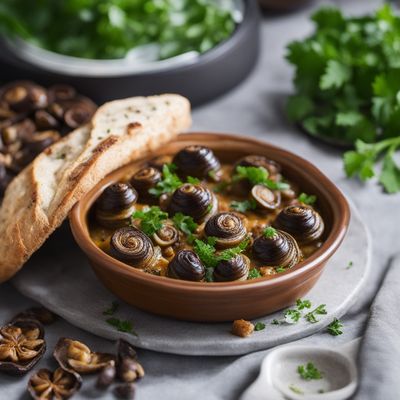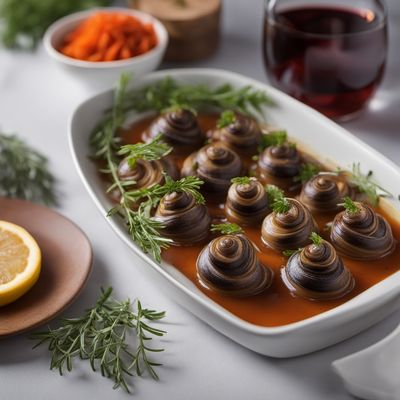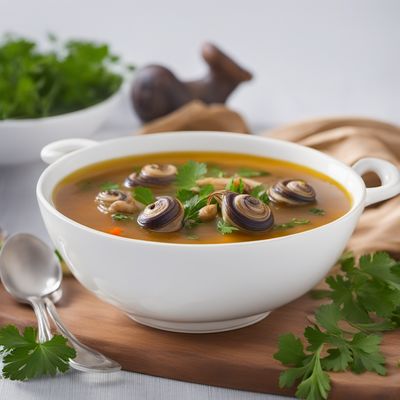
Ingredient
Snail, roman
The Delicacy of Escargot
Snail, roman, is a type of edible snail with a tender and slightly chewy texture. It has a mild, earthy flavor that is often enhanced with garlic butter or other savory seasonings. Snail, roman, is commonly served as an appetizer or main course in French and Mediterranean cuisine.
Origins and history
The consumption of snails dates back to ancient times, with evidence of snail farming found in archaeological sites across Europe. Snail, roman, became popular in French cuisine during the Roman Empire and has remained a delicacy ever since.
Nutritional information
Snail, roman, is a good source of protein, vitamins, and minerals such as iron and calcium. It is also low in fat and calories. A 100-gram serving of snail, roman, provides approximately 90 calories.
Allergens
Snail, roman, may cause allergic reactions in some individuals, particularly those with shellfish allergies. It is important to exercise caution and consult with a healthcare professional if you have any concerns.
How to select
When purchasing snail, roman, look for live snails that are tightly closed in their shells. Avoid any snails with cracked or damaged shells. It is best to buy snails from reputable sources or specialty stores that ensure proper handling and storage.
Storage recommendations
Live snails should be kept in a cool and humid environment, such as a refrigerator, until ready to use. Cooked snails can be stored in an airtight container in the refrigerator for up to 3 days.
How to produce
Snail, roman, can be challenging to produce at home due to specific breeding and housing requirements. It is recommended to purchase live snails from reputable suppliers for culinary purposes.
Preparation tips
To prepare snail, roman, for cooking, they need to be purged and cleaned thoroughly. This involves fasting the snails for a few days, then rinsing them with water and removing the digestive tract. Snail, roman, is commonly cooked by simmering in a flavorful broth or sautéed with garlic butter. It is often served with crusty bread or as a topping for pasta dishes.
Culinary uses
Snail, roman, is commonly used in dishes such as escargot, where the snails are cooked with garlic butter and herbs. It is also used as a topping for pizzas or incorporated into pasta dishes. Snail, roman, adds a unique and luxurious touch to various appetizers and main courses.
Availability
Snail, roman, is commonly available in countries with a strong culinary tradition, such as France, Italy, Spain, and Greece. It can also be found in specialty stores or gourmet markets in other regions.
More ingredients from this category
Recipes using Snail, roman

Brandenburg-style Escargot
Savory Delight: Brandenburg-style Escargot with a Twist

Kurdish-style Escargots with Spiced Butter
Sizzling Snails: A Kurdish Twist on Escargots Bourguignonne

Japanese-style Garlic Butter Escargot
Umami Delight: Japanese-inspired Garlic Butter Escargot

Leonese-style Escargot
Savory Escargot Delight: A Taste of Leonese Cuisine

Leonese Escargot Soup
Savory Delight: Leonese Escargot Soup with a Twist

Balkan-style Escargot
Savor the Balkan Delight: Escargot with a Twist

Valencian-style Escargot Stew
Deliciously Rustic Valencian Escargot Stew: A Taste of Mediterranean Comfort

Lumache alla Piemontese with Herb Butter Sauce
Savory Escargot in Fragrant Herb Butter Sauce

Grilled Escargot with Herb Butter
Savory Escargot Delight: Grilled Herb Butter Escargot
